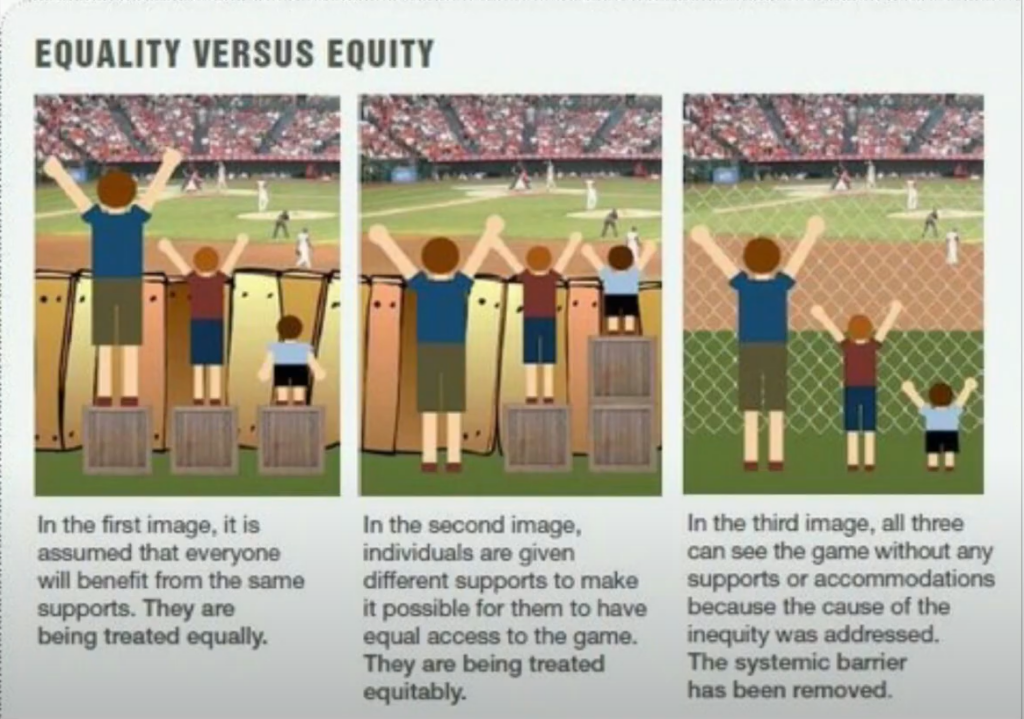Blogpost #3

Resource – When is Equality not Equality | business disability international
Inclusion in Education
I define inclusion in education as the intentional design of learning environments where all students can participate, feel valued, and succeed without needing separate accommodations or support. Inclusion, to me, goes beyond simply giving everyone the same resources—it’s about removing barriers from the start so that learning is accessible to everyone. This aligns with the third image from the above graphic, where the barriers are eliminated entirely rather than temporarily adjusted. In my day-to-day practice, I try to approach learning design with this mindset—anticipating diverse needs and ensuring that every student can engage meaningfully with the material. I aim to build systems and strategies that allow for flexibility and multiple ways of learning, reflecting the principles of Universal Design for Learning (UDL).
Gaps Between Philosophy and Practice
However, I also recognize that there can be gaps between the philosophy of inclusion and what actually happens in classrooms. While educators often agree on the importance of inclusion, limited resources, time, and institutional constraints can make it difficult to fully implement UDL principles. Sometimes, classrooms rely on “quick fixes” or individual accommodations rather than proactive design. Bridging this gap means shifting from a reactive approach to a proactive one—where inclusion isn’t an afterthought but a foundational part of how we plan, teach, and assess learning.
How a PLN Can Support Inclusion
A Professional Learning Network (PLN) can play a key role in supporting inclusion by providing access to diverse perspectives, strategies, and resources that help educators design more equitable learning environments. By engaging with other teachers, researchers, and advocates who prioritize inclusive education, I can continuously learn new ways to remove barriers and meet the diverse needs of my students. A PLN allows for collaboration and sharing of ideas that align with the philosophy of Universal Design for Learning—learning from others who have found creative ways to make learning more accessible and engaging for all.
Connecting with Diverse Voices and Perspectives
Connecting with educators and thinkers from different backgrounds strengthens my approach to equity and inclusion by broadening my understanding of what inclusion really looks like in practice. Hearing from individuals with varied cultural, linguistic, and learning experiences helps me recognize biases or assumptions I might hold and encourages me to consider multiple viewpoints when designing lessons. These interactions challenge me to think beyond my own experiences and create learning spaces that truly reflect and respect diversity.
Ensuring Diversity Within My PLN
To ensure my PLN reflects the diversity I want to promote in my teaching, I can take intentional steps to connect with voices outside of my immediate circle—educators from different regions, cultural backgrounds, and disciplines. I can also follow organizations and advocates focused on inclusive education, accessibility, and equity. Participating in online discussions, professional forums, and social media groups that center marginalized perspectives can help me stay informed and accountable. By curating a PLN that models the diversity I hope to see in my classroom, I can better align my professional growth with the inclusive values I want to uphold in my teaching.